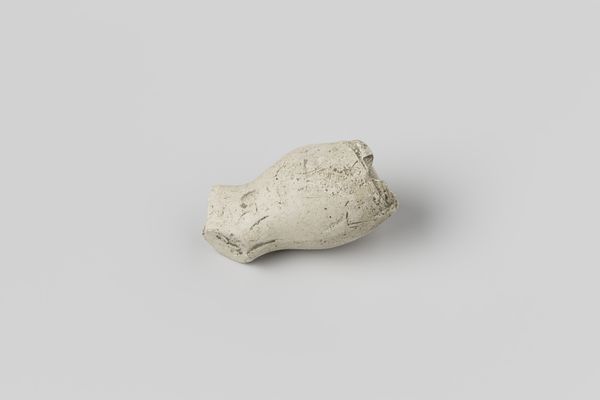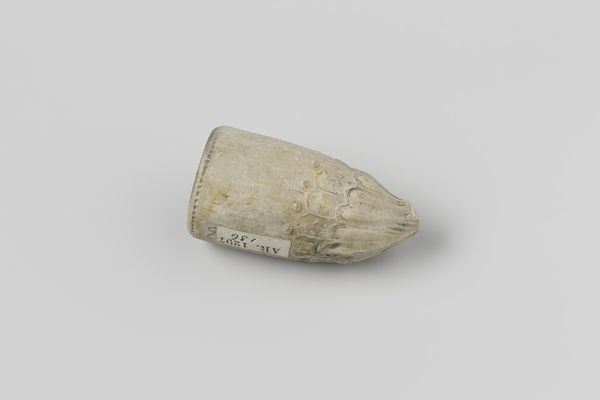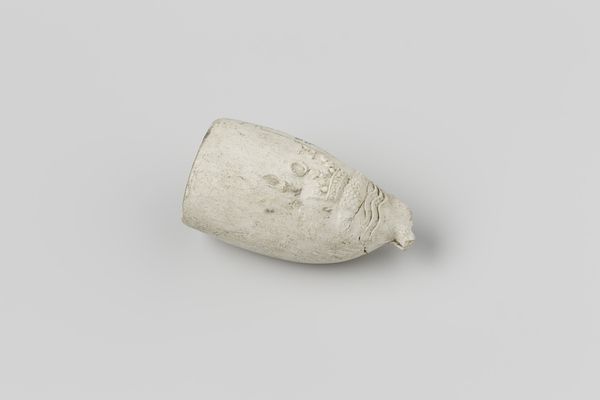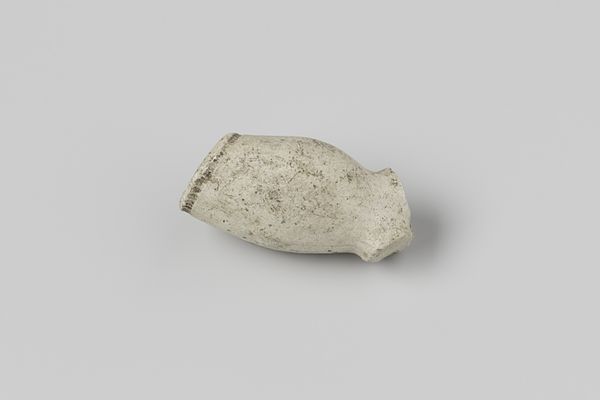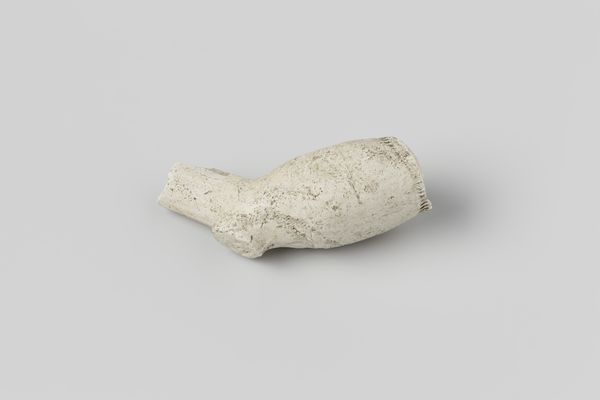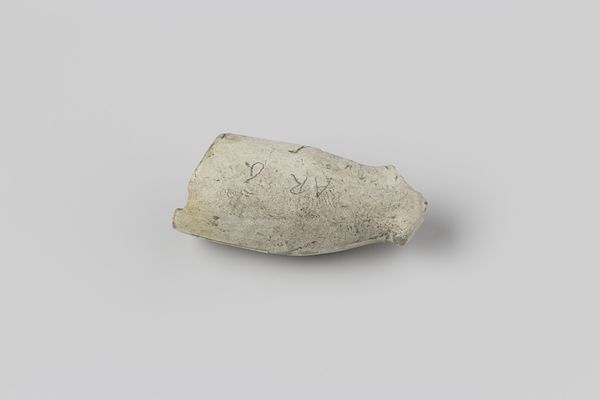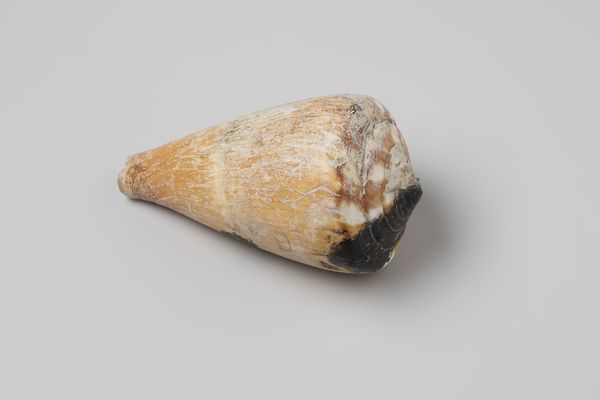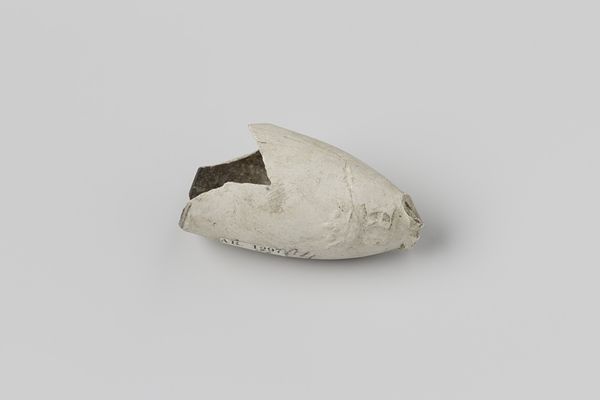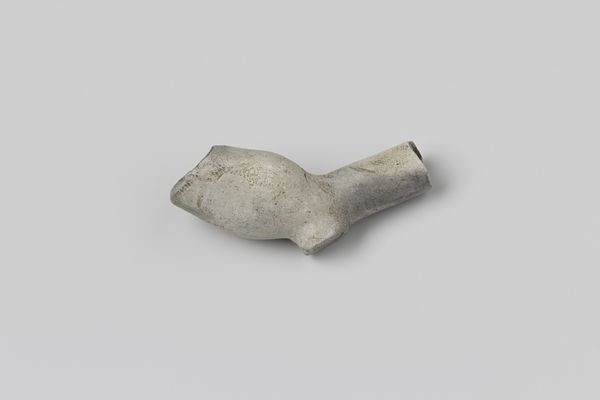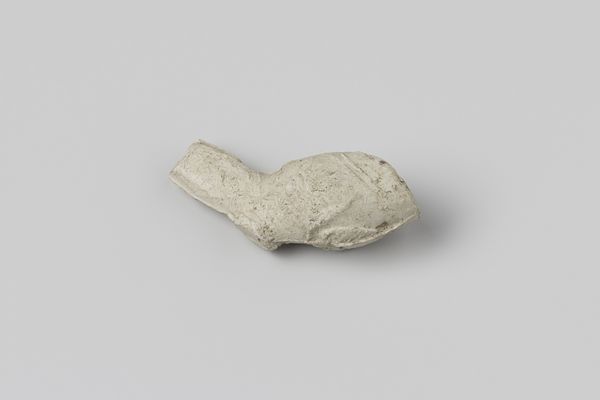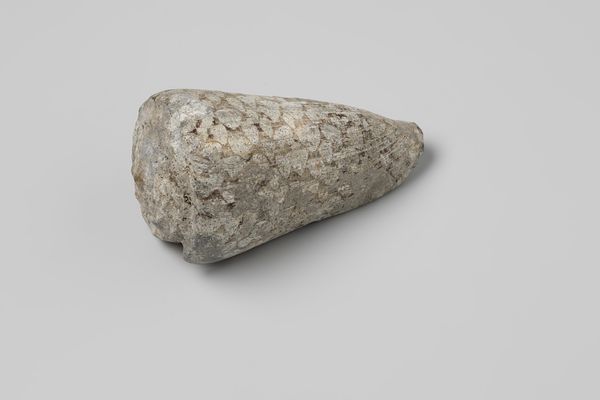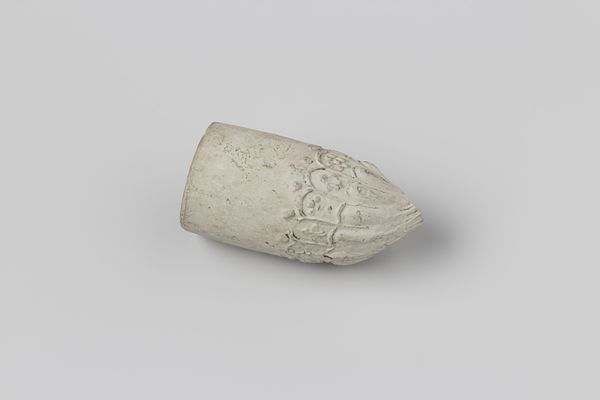
Conus ammiralis shell from the wreck of the Dutch East India ship Witte Leeuw before 1613
0:00
0:00
nietvantoepassing
Rijksmuseum
found-object, photography
#
found-object
#
photography
#
naturalism
Dimensions: length 5.1 cm, width 2.7 cm, height 2.8 cm
Copyright: Rijks Museum: Open Domain
Editor: So this is a photograph of a Conus ammiralis shell, salvaged from the wreck of the Witte Leeuw, a Dutch East India ship that sank before 1613. It’s…remarkably unremarkable, in a way. What do you make of this piece? Curator: Well, it's not about aesthetics, is it? It’s a found object, presented as… evidence. What does it tell us about the means of production and exchange in the 17th century? It's about trade routes, about colonial ambitions, and about the human cost of procuring luxury goods. Editor: Human cost? It's just a shell. Curator: No, no. Think about it materially. The shell becomes a signifier of an entire economic system built upon exploiting resources and labor. The Witte Leeuw wasn't carrying just shells, was it? It carried spices, textiles, perhaps even enslaved people. This object reminds us of all that. It's a fragment of a much larger, brutal picture. The wreck represents a disruption of those globalized circuits. Editor: I see your point. It transforms this humble seashell into something much more charged. This shell has layers. Curator: Exactly! Consider the hands this shell passed through: the indigenous fishermen who originally found it, the sailors who transported it, perhaps even the wealthy Dutch merchant who intended to own it. Its materiality links directly to global capitalism's history. The "naturalism" of this photo is thus deceiving. Editor: So by focusing on the materials – the shell itself and what it represents - you uncover the history embedded within? Curator: Precisely! This photograph challenges us to think beyond the surface, to consider the social relations and the economic systems that underpin even the simplest of objects. Editor: I’ll definitely see shells differently from now on. Thanks for helping me connect it all! Curator: My pleasure. Art isn't separate from life. We must always consider the materials and context in which a work originates, remembering the human labour.
Comments
No comments
Be the first to comment and join the conversation on the ultimate creative platform.
